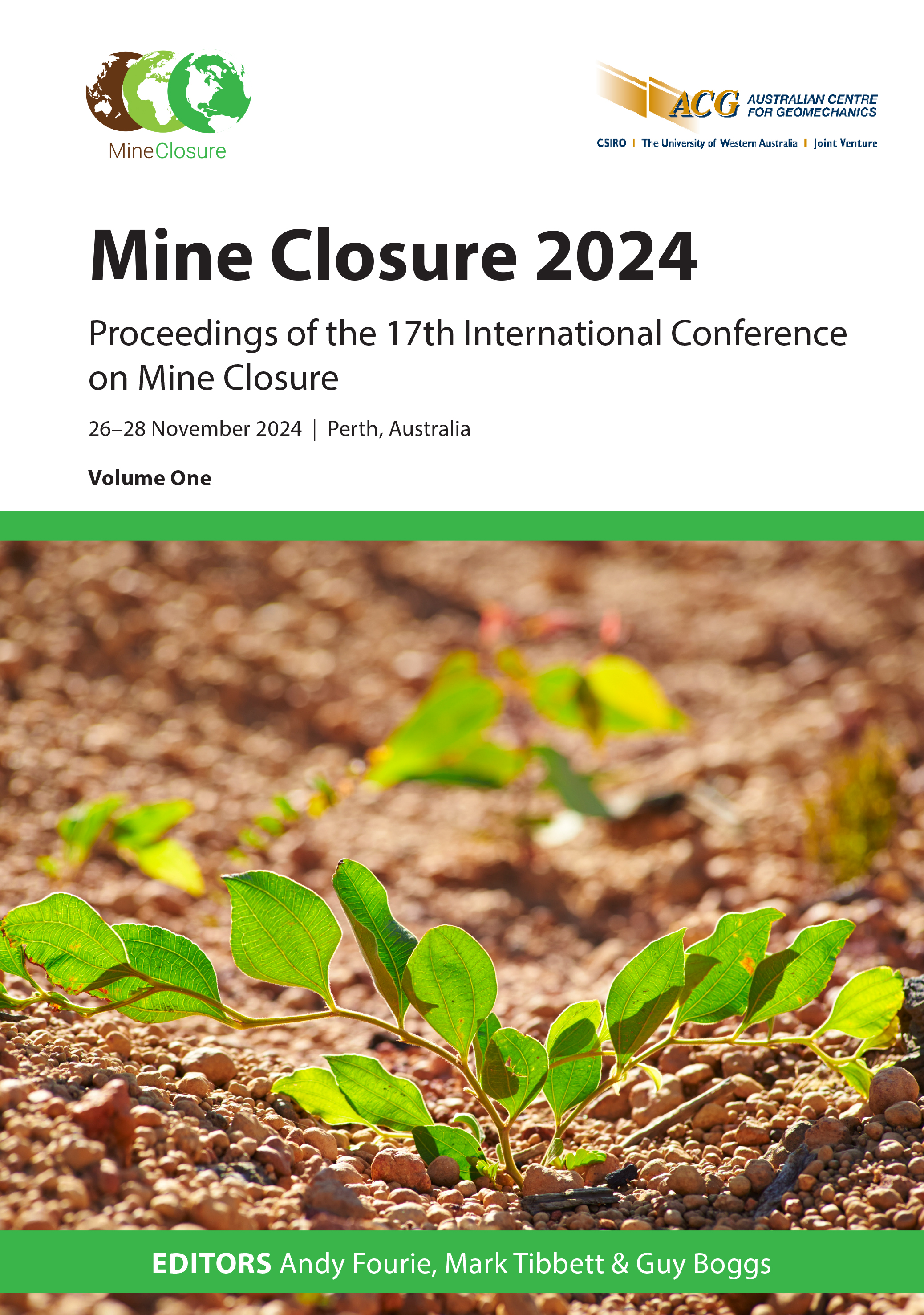The perfect storm: mine closure in the Latrobe Valley, Victoria

|
Authors: Scrase, A; Brereton, J |
DOI https://doi.org/10.36487/ACG_repo/2415_94
Cite As:
Scrase, A & Brereton, J 2024, 'The perfect storm: mine closure in the Latrobe Valley, Victoria', in AB Fourie, M Tibbett & G Boggs (eds), Mine Closure 2024: Proceedings of the 17th International Conference on Mine Closure, Australian Centre for Geomechanics, Perth, pp. 1297-1310, https://doi.org/10.36487/ACG_repo/2415_94
Abstract:
In response to the global energy transition, the three large open cut coal mines in the Latrobe Valley region of Victoria, Australia, have announced their closure. As stated by Laurence (2006): ‘The excitement and fanfare that surrounds the opening of a new mine is never present when it finally closes.’ Although the timing may be uncertain, the closure of mines is ultimately inevitable. In 2014 a fire burned in Hazelwood Mine for 45 days, significantly impacting the local community. A government investigation, the Hazelwood Mine Fire Inquiry (HMFI), investigated the causes and contributing factors of the fire. Among its findings was a lack of preparedness both by government and industry for the closure of mining operations and the rehabilitation of the mines. Without coordinated planning and action, the region risked facing a ‘perfect storm’ of social, economic and environmental consequences. In Victoria, legislation defines the concept of a declared mine. A declared mine is defined as a mine that has geotechnical, hydrogeological, water quality or hydrological factors that may be deemed to pose significant risk of harm to the community, environment and infrastructure. As identified in HMFI 2016, the regulatory framework was not adequate to regulate the closure of declared mines in Victoria, there has been and continues to rapidly change to provide more focus on closure and rehabilitation. The catalyst for a shift of focus to mine rehabilitation in Victoria came with the Hazelwood mine fire in 2014 and the subsequent inquiry (Department of Jobs, Precincts and Regions), Hazelwood Mine Fire Inquiry 2016), which foreshadowed mine closure in the Latrobe Valley. These regulatory reforms come at a time when the declared mines in the Latrobe Valley come close to ceasing operations. Good practice in mine closure requires planning to begin before mining starts and to continue throughout the life of the mine. Significant regulatory change so late in the mine life cycle presents challenges for both operators and government. There are many examples of poor mine closure around the world. One particularly relevant case is that of the north-eastern counties of the United Kingdom where the whole coal industry was closed rapidly with little planning or care for the social or environmental impacts. Over 25 years later these counties are still feeling the effects (Sheldrick 2018). The closing of the Latrobe Valley mines has created many important questions that must be addressed to ensure successful outcomes, including: • What is the post-mining vision for the Latrobe Valley? • Where are we now, and how do we move towards that vision? • Are government, the mining industry, other industries and the community ready, and do they have the capacity, to begin the transition? Are they willing to collaborate and co-fund the transition process? • Is the current legislation fit-for-purpose and will it drive good outcomes? This paper will outline the emergence of a ‘perfect storm’ in the Latrobe Valley and offers potential solutions to help move towards the safe, stable and sustainable closure outcomes that all stakeholders seek. This paper does not address the community or First Nations’ engagement aspects required for mine closure planning and implementation in the Latrobe Valley.
References:
current/month/vic/archive/202106.summary.shtml
EnergyAustralia 2022, Morwell River Diversion, Melbourne.
Federal Government of Australia 1999, Environment Protection and Biodiversity Conservation Act 1999, Australia.
Government of Victoria 1978a, Crown Lands Act 1978, Australia.
Government of Victoria 1978b, Environment Effects Act 1978, Australia.
Government of Victoria 1987, Planning and Environment Act 1987, Australia.
Government of Victoria 1989, Water Act 1989, Australia.
Government of Victoria 1990, Mineral Resources (Sustainable Development) Act 1990, Australia.
Government of Victoria 2006, Aboriginal Heritage Act 2006, Australia.
Government of Victoria 2018, Aboriginal Heritage Regulations 2018, Australia.
Government of Victoria 2017, Environment Protection Act 2017, Australia.
Hazelwood Mine Fire Inquiry 2016, Hazelwood Mine Fire Inquiry Report 2015–2016 Volume IV - Mine Rehabilitation, Melbourne.
ICMM 2019, Integrated Mine Closure: Good Practice Guide, 2nd edn, London.
ICMM 2022, Closure Maturity Framework; Tool for Closure User Guide, London
Laurence, DC 2006, ‘Optimisation of the mine closure process’, Journal of Cleaner Production, vol. 14, no. 3–4, pp. 285–298,
Mine Land Rehabilitation Authority 2024, Latrobe Valley Declared Mines Figure, Morwell.
Nicholls, A 2015, ‘The challenges and benefits of risk-based regulation in achieving scheme outcomes’, Injury Schemes Seminar, Institute of Actuaries of Australia, Sydney.
=kayXf16a3Fzog9XUGjZ3MNSGH6H8zM
Sheldrick, T 2018, ‘‘Community’s ‘worst fears realised’, 25 years after closure of last deep pit on Durham coalfield’, ITV News,
© Copyright 2026, Australian Centre for Geomechanics (ACG), The University of Western Australia. All rights reserved.
View copyright/legal information
Please direct any queries or error reports to repository-acg@uwa.edu.au
View copyright/legal information
Please direct any queries or error reports to repository-acg@uwa.edu.au

